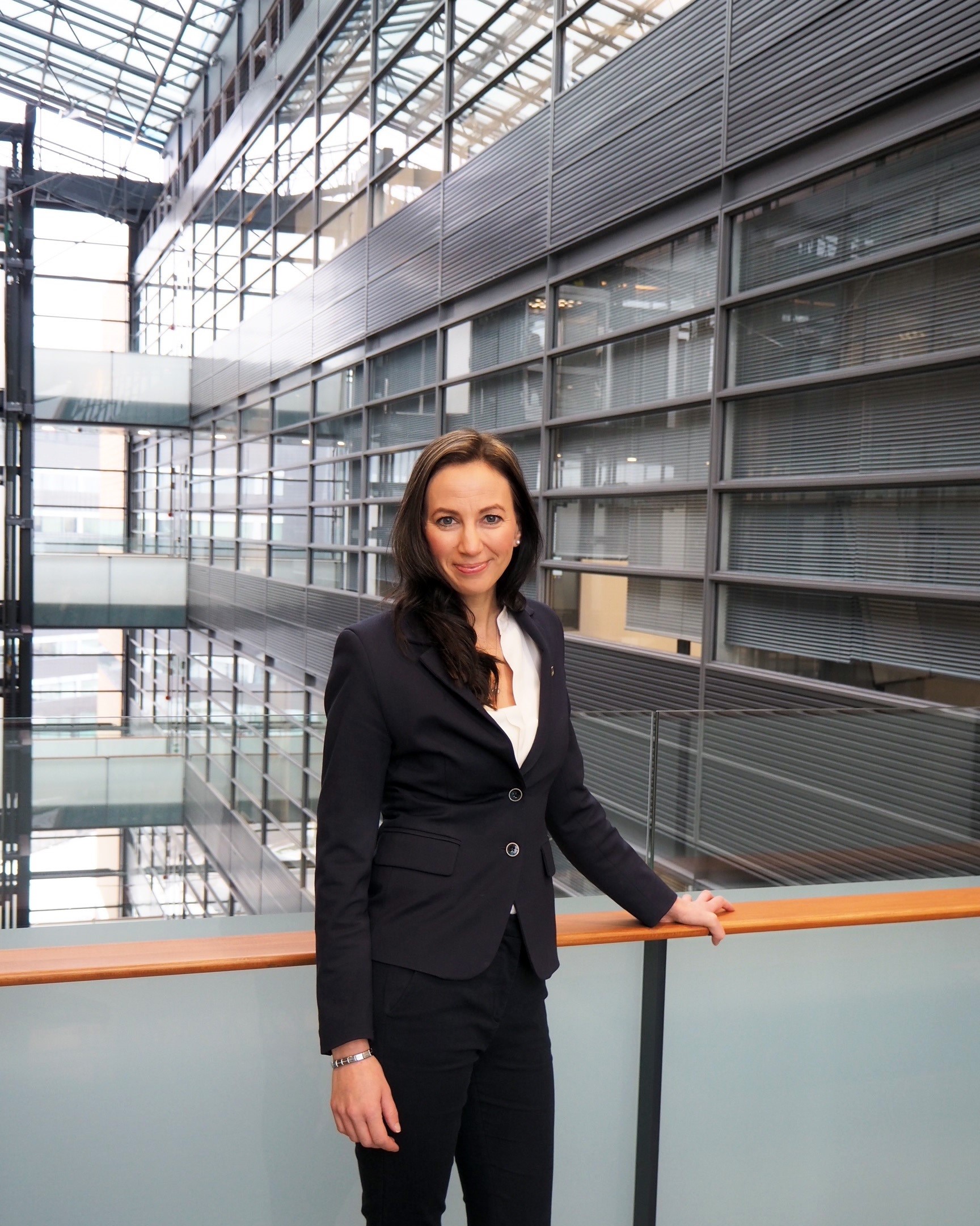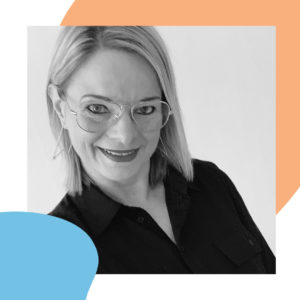Seizing opportunities and challenges has taught me time and again a very valuable lesson: you must know your skills in and out – because when you know exactly what you’re doing, and when you own the expertise you’ve built, there are no limitations.
My current role as Vice President of Global Technology Operations at CGI oversees two big areas: Infrastructure services for Commercial clients and the production of End User services. This is not only the largest workplace I have been to so far, but also, having the opportunity to oversee a broad variety of infrastructure services in different industries keeps me on a continuous, fascinating, learning process.
Being in charge of the ‘big picture’ relates very much to my beginnings in my studies of Industrial Management! It is a combination of technology and economics, which has always fascinated me – there is no point in creating fancy processes if they don’t deliver results. It is always about delivering outcomes and creating processes that support them.

Maria Lukkari, Vice-President of Global Technology Operations, CGI
Not every coincidence is a coincidence
I started my studies at Kymenlaakso University of Applied Sciences, nowadays XAMK with a Bachelor’s Degree in Industrial Management. Although Industrial Management is a very wide area, to make it concise one could say that it deals with service processes within businesses: how to design and integrate these processes, how to drive efficiency and successfully steer sales, how to enable the growth and strategy of a company.
I am always tempted to say that getting into the degree was a sort of accident: in my youth, I was actually quite interested in horse riding – I had this idea of going abroad and building a career on it. But then it dawned on me that horse riding is a hard path; studying something else seemed reasonable. And Industrial management sounded quite good: I had the competition drive inside me because when you do any sports you have always in the rearview the steps you need to take to improve and to go forward – and Industrial Management had the exact same process: to look in detail at the process on driving sales and efficiency in production. So now thinking about it, was it a coincidence, or an accident? I am not quite sure anymore!
Saying yes to thrilling (and a bit intimidating) opportunities
I was quite young when I started working life, as part of a Nord Stream project in the oil and gas sector. It was an international project, with lots of media attention and it proved to be incredible for my learning. I worked with the main subcontractor of Nord Stream, so we handled the pipe coating and shipping to the welding vessels – we had 13 different nationalities and I was fairly young doing the HSE (Health & Safety).
We started off with constructing the concrete coating plan so there was nothing there in the beginning except a pile of pipes: we started building the plant, doing all the equipment installation. I also handled everything HSE-related: safety inductions, risk assessment, and authorities’ visits. It was hard work that paid off: after 1,5 years I got promoted to be responsible for the whole HSE of Finland. This is for me a brilliant example of the promotion regardless of age and gender: I was 25 years old, and it clearly was in the company’s culture: for someone young to get the chance to rise up to their skills, despite being young, despite being a woman, in a very technical domain with 80% of the employees being men.
I would say that I got a very good start and a lot of confidence with this – it built a good base for me, for my future, and I could move forward building upon that foundation.
More and more opportunities for learning – and making the most of them
I started my Master’s Degree, also in Industrial Management, this time at Lappeenranta University of Technology. After only one year into it, an opportunity came my way and I could not say no – I went to work for Empower (nowadays Enersense), doing indeed industrial management type of work: optimizing production and efficiency, optimizing costs, and doing sales. Although I eventually finished my Master’s Degree, I continued working with Empower; I was there for a total of 8 years! After that first experience on the industrial maintenance side, the company did a process change and I became responsible for our resource management, centralizing it and renewing all those processes. This was an incredible learning curve for me since Empower had a very low hierarchy so I got to do quite many things outside of my responsibility which was great.
Learning to handle pressure when unexpected challenges appear
After Empower I got the opportunity to move to another subsidiary within the same group but that actually constructed Telecom networks for large operators in Finland. The company had just won a large deal, so they needed a Head of Production to be in charge of the activities and the construction.
This was intimidatingly large, so to speak, with an annual revenue of 50€ million – and it was my first P/L responsibility on a large organization. A very challenging moment presented itself right at the beginning: we had signed a new deal just to realize afterward that some of the assumptions we had made were not actually able to materialize in the early activities – so we had to change quite early our operating model and how we worked and at the same time we were boosting up the business. I saw myself in the middle of a big change: moving from a growth situation to a turnaround situation. The first year was rough, I can say. I learned a lot about how to handle pressure because as a leader, one needs to be able to handle the pressure for oneself and for the team. I also learned how to concentrate on the most important things: when everything is burning, I learned to identify and prioritize the largest fire. So we worked hard, we changed the operation model and implemented a series of changes at the same time when kicking in new revenues… and already in the second year we got it turned around and it really changed from loss- to profit-making business.
Working at CGI
I left towards CGI after being in the Telecom business role for three years. I saw the change as an interesting and necessary horizontal move in my career. CGI is at the center of digitalization, and new technologies – I couldn’t pass on the opportunity.
After being in CGI for 1,5 years, I got the chance to move into End User services – they needed a vice-president to drive that business, and I jumped in. In my first year we got a good turn-around, and now of course with the latest technologies such as AI, we continuously work with interesting insights on how to renew our services, how to leverage these new technologies, and how to bring those benefits to our clients. It’s an interesting time to be in this type of role! And CGI in itself, we have so much expertise – it’s so inspiring!
To all the women out there considering tech: your uniqueness is your strength
When I think about the imbalance between men’s and women’s talents in the field of tech, there’s a remark I feel compelled to bring up: we need to understand that the tech field requires a huge variety of skills – which is also a key factor in the success of businesses: the more diverse the company is in terms of know-how, the better the performance. So to all the women out there considering a path in tech: we need your talent, as specific or unique as it might be. Bring it on!
Let’s share some favorites
A podcast that I love listening to is Leadcast (it’s in Finnish!). Lawyers Maria Wasastjerna and Essi Weseri interview successful names in the Finnish business scene about their career paths and leadership. Another brilliant one is Growth Pod, which interviews marketing experts, business leaders, and entrepreneurs to uncover the stories behind profitable growth.
And my favorite career advice, which I believe applies also to life: when you think about a path to follow, a strategy to make, a solution to create, think first about the value part – wherever you create, what is the value behind? What is the long-term goal? Start with that first, and only then begin to think about the execution / how to execute it.




